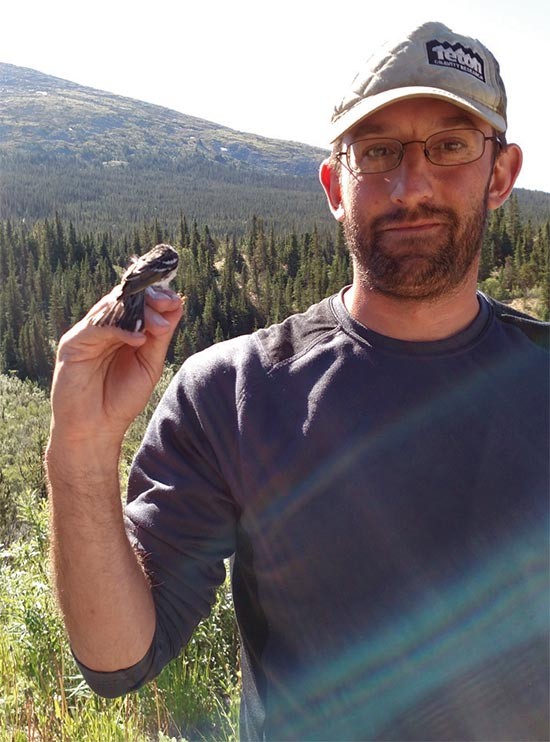Many scientists have predicted that as the climate warms, most bird species in the Northern Hemisphere will shift their ranges northward or up the slopes of mountains in order to remain in their preferred climate. To learn whether that has already begun to occur in the mountains of New England, a team of University of Massachusetts researchers analyzed bird census data collected in the White Mountain National Forest as far back as 1993. The scientists found that the data – from 768 sites visited twice each year – did not always follow the expected patterns.
Because the study was looking at a relatively short period of time, the researchers were expecting to see little in the way of change in terms of species moving upslope. “We actually thought maybe we wouldn’t find anything,” said William Deluca, a research fellow at the Northeast Climate Science Center at UMass.
He was wrong. It turned out that 9 of 16 low-elevation species like ovenbirds, black-and-white warblers, and hermit thrushes – all of which breed primarily in deciduous and northern hardwood forests – showed evidence of shifting their upper-elevation boundary upslope an average of 99 meters over the 17-year period of the study. That aligns with the results of similar studies in the Sierra Nevada and the Andes.
More surprisingly, when Deluca analyzed the data for upper-elevation species like white-throated sparrow, yellow-bellied flycatcher, and Swainson’s thrush, species that prefer to breed in the montane spruce-fir forest, 9 of 11 species shifted their lower-elevation boundary downslope an average of 19 meters. Among upper-elevation species, only the magnolia warbler shifted its upper boundary farther upslope.
“The opposing elevational shifts of two distinct and adjacent bird communities is, to our knowledge, unprecedented and highlights the need for caution when applying conventional expectations to species responses to climate change,” wrote Deluca and co-author David King in the Journal of Ornithology in November 2016.
The surprising and contrary results appear to have different explanations. As predicted, the researchers believe the upslope movement of the low-elevation species is a result of the warming climate, which corresponds with climate data from the Mount Washington Observatory indicating that little warming has occurred at high elevations, but significant warming has occurred at middle and lower elevations.
The downward shifting of upper-elevation species may be the result of a downslope shift in habitat. Deluca said that recent die-offs of red spruce may have created a void in the habitat of upper-elevation species, causing them to shift downslope. An increase in the abundance of balsam fir near the lower boundaries of the birds’ distribution may also be a contributing factor.
“Our results aren’t something that a land manager can do much about at any reasonable scale,” Deluca said. “But it helps us understand how these species are responding to the changing environment. We’re now working to understand the mechanism that’s leading to these shifts in distribution. If they’re responding to habitat, maybe there is a management solution.”



Discussion *